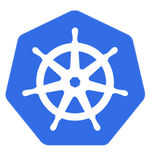Quantyca is proud to be a part of the Build with Confluent initiative. By verifying our streaming-based use cases with Confluent, you can have confidence that our Confluent-based service offering is not only built on the leading data streaming platform but also verified by the experts at Confluent.
Confluent is the data streaming platform that is pioneering a fundamentally new category of data infrastructure that sets data in motion.
Confluent’s cloud-native offering is the foundational platform for data in motion – designed to be the intelligent connective tissue enabling real-time data, from multiple sources, to constantly stream across the organization. With Confluent, organizations can meet the new business imperative of delivering rich, digital front-end customer experiences and transitioning to sophisticated, real-time, software-driven backend operations.
Monolithic architectures limit scalability and business agility, prompting a shift from app-centric to data-centric approaches. Data is now viewed as a product, optimizing value for its consumers. A data product, the smallest deployment unit within a data platform, comprises data, metadata, infrastructural components, and application code.
Data Governance plays a crucial role in ensuring interoperability between data products. It’s federated and automated, providing end-to-end governance across technologies. It facilitates developer experiences with automatic, self-service capabilities and helps consumers with meaningful information about data availability, characteristics, semantics, usage and quality.
Quality is governed through automatic policy enforcement applied during data product deployment, to accept or reject instances, and during their life cycle through a continuous monitoring. The effectiveness and sustainability of the approach is based on the implementation of quality gates directly next to the data sources rather than at various points that consume their outputs. In real-time applications, this increases latency, but it’s a worthwhile trade-off in highly regulated contexts or analytical platforms. Centralization of policies and their application across the platform against local, fragmented policies is key. This facilitates management and allows policy organization in suites. A holistic approach is adopted to manage the life cycle of cross-technology data products.
























